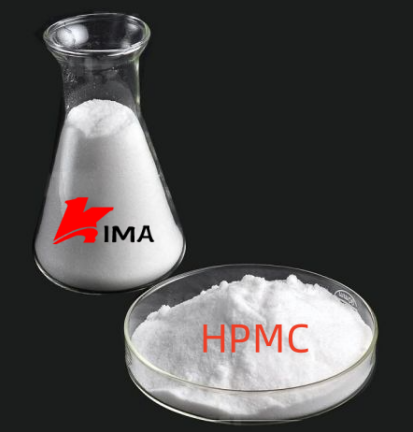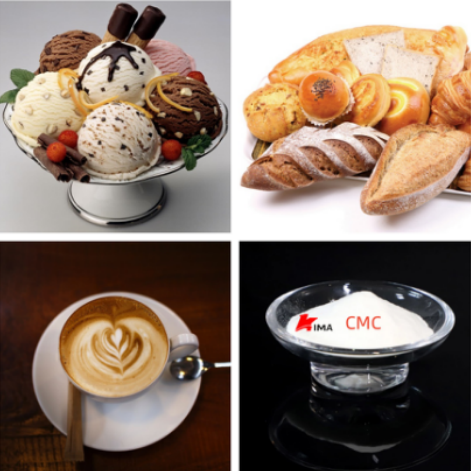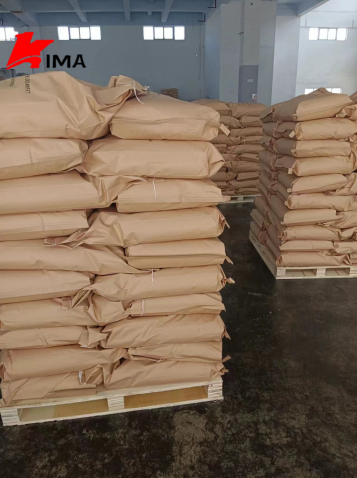Carboxymethyl cellulose (CMC) is an important food additive widely used in the food industry. CMC has multiple functions such as thickening, stabilization, emulsification, film formation and water retention, so it plays a vital role in food processing.

1. Basic properties of CMC
CMC is a water-soluble anionic polymer obtained by chemical modification of natural cellulose. It has good water solubility, is non-toxic and tasteless, and has strong biocompatibility and stability. CMC can control its viscosity and rheological properties by adjusting the degree of substitution (DS) and molecular weight, making it suitable for different food formulations.
2. The main functions of CMC in food
(1) Thickener
CMC has good thickening properties and can effectively increase the viscosity of the food system to make the product achieve the ideal taste and texture. For example, in foods such as dairy products, juices, ice cream and syrups, CMC can be used to increase the viscosity of the fluid, improve the taste, and prevent stratification or precipitation.
(2) Stabilizers
In dairy products, protein drinks and other foods, CMC can prevent protein coagulation and precipitation, and improve the stability of the product. For example, in yogurt and soy milk, the addition of CMC can prevent whey precipitation, making the product have a uniform and delicate texture.
(3) Emulsifiers
CMC has a certain emulsifying effect and can form a stable emulsion system between the water phase and the oil phase. For example, in salad dressing, mayonnaise and other emulsified foods, CMC can help emulsify oils and prevent stratification, maintaining the uniformity and good taste of the food.
(4) Water-retaining agent
CMC has a strong water absorption capacity and can be used to prevent food moisture loss and improve food moisture retention. For example, in baked foods such as bread and pastries, CMC can effectively delay moisture loss, prevent food from hardening, and increase the shelf life of the product.
(5) Film-forming agent
CMC can form a transparent, edible film on the surface of food to protect the food. For example, in fruit and vegetable preservative coatings, CMC can be used to reduce water evaporation and prevent microbial invasion, thereby extending the shelf life of food. In addition, in candy and chocolate coatings, CMC can also provide good gloss and protective layers.

3. Application of CMC in different foods
(1) Dairy products and beverages
CMC is often used as a thickener and stabilizer in milk, yogurt, soy milk and fruit juice drinks to prevent precipitation, stratification and protein coagulation. For example, in low-fat milk, CMC can provide a mouthfeel similar to whole milk without increasing calorie intake.
(2) Ice cream
In ice cream, CMC can increase the viscosity of the mixture, improve emulsification properties, reduce ice crystal formation, and make the taste more delicate and smooth. In addition, CMC can prevent structural changes in ice cream due to temperature changes during storage, thereby improving product stability.
(3) Noodles and baked goods
CMC can be used in the production of bread, cakes and pastries to improve the water holding capacity of the dough, make the product softer and more moist, and delay aging. For example, in quick-frozen dough, CMC can prevent water loss during the freezing process, thereby maintaining good dough extensibility and finished product quality.
(4) Candy and jelly
CMC can be used in soft candies and jellies to improve their elasticity and stability, giving the products a better taste and durability. In jams and jellies, CMC can also prevent water separation and keep the product uniform in texture.
(5) Meat products
In meat products such as ham and sausage, CMC can be used as a water retainer and emulsifier stabilizer to reduce water loss and improve the tenderness and taste of the product. In addition, CMC can also improve the slicing properties of meat products, making the products more uniform and easier to process.

4. Safety and regulatory standards of CMC
As a widely used food additive, CMC has been approved for use in the food industry by multiple international and national agencies. For example, the U.S. Food and Drug Administration (FDA) lists CMC as a Generally Recognized as Safe Substance (GRAS), and the European Food Safety Authority (EFSA) and China's National Food Safety Standard (GB 1886.232-2016) have also made corresponding provisions for its scope of use and maximum usage.
Although CMC is relatively safe, its usage should be strictly controlled during food processing to ensure the best quality and safety of the product. Generally, the usage of CMC is between 0.1% and 1.0% of the total weight of the food, and the specific usage needs to be adjusted according to different food categories and production processes.
CMC has a wide range of application value in the food industry and can effectively improve the texture, stability and taste of food. As a thickener, stabilizer, emulsifier, water retention agent and film former, it plays an important role in many fields such as dairy products, beverages, ice cream, pasta products, candy and meat products. Due to its high safety and recognition by international regulations, CMC will continue to be an indispensable and important ingredient in the food processing industry.
 English
English 日本語
日本語 français
français Deutsch
Deutsch Español
Español italiano
italiano русский
русский português
português العربية
العربية Türkçe
Türkçe Nederland
Nederland






